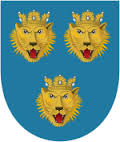Dalmatian National Party Dalmatinska Narodna Stranka | |
|---|---|
 | |
| Abbreviation | DNS |
| Founded | 1990s |
| Ideology | Regionalism Autonomism |
The Dalmatian National Party (Croatian : Dalmatinska narodna stranka, DNS) was a political party founded in the region of Dalmatia within Croatia. It was a radical regionalist party run by citizens who called Dalmatia their homeland. [1] It held similar stances to the Dalmatian autonomist party, Dalmatian Action (DA) [1] Like the DA, it complained about Croatian President Franjo Tuđman's centralized state, and demanded that Dalmatia regain its status as a special region within Croatia. [1]